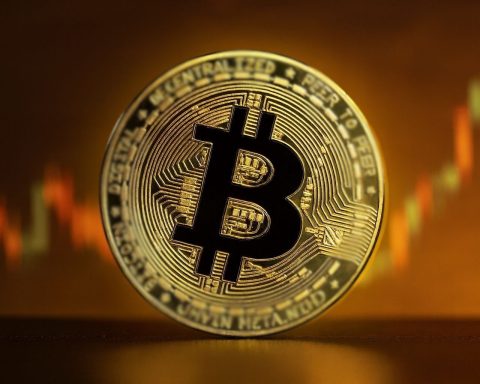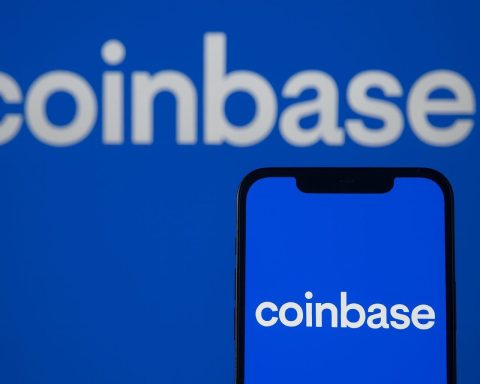- Bitcoin briefly spiked to $120,000, retraced about 2%, and triggered liquidations of over 176,000 positions totaling more than $500 million in losses.
- On July 18, 2025, President Donald Trump signed the GENIUS Act, creating the first federal framework for stablecoins and requiring issuers to obtain federal or qualifying state licenses with reserve and monthly disclosure standards.
- CoinShares became the first European crypto firm to secure a MiCA license from France’s AMF, enabling passporting across all 27 EU countries.
- Kitabo Inc. added Bitcoin to its balance sheet as a strategic reserve asset.
- Coinbase announced on July 22, 2025 that BankrCoin (BNKR), Jito Staked SOL (JITO), and Metaplex (MPLX) were added to its listing roadmap.
- Coinbase launched regulated perpetual futures for U.S. retail traders via its CFTC-approved affiliate, offering high-leverage crypto contracts with no expiry.
- Binance reported 24-hour spot volumes above $25 billion during the rally, and had no major outages.
- The White House Office of Digital Assets planned to release its first comprehensive crypto policy report by July 30, 2025.
- OSL secured $300 million in equity funding to power its global expansion.
- Ozzy Osbourne’s CryptoBatz NFT collection surged, with floor price rising from under 0.02 ETH to about 0.08 ETH and trading volume up 100,000% to over $281,000 in 24 hours.
Over the past two days, cryptocurrency markets have surged to multi-year highs while regulators advanced landmark laws. Bitcoin flirted with record prices near $120,000 before a healthy pullback, and altcoins rallied in tandem. Major policy moves — including a new U.S. stablecoin law and Europe’s first MiCA license — promise clearer rules for crypto. Meanwhile, exchanges expanded offerings with no outages during the frenzy, and recent hacks kept security in focus. The NFT and meme coin arena saw a dramatic revival (sparked by Ozzy Osbourne’s NFT mania), albeit with opportunistic scams piggybacking on the hype. Social media buzzed with altseason excitement and influencer drama (Logan Paul’s CryptoZoo lawsuit). Below is a comprehensive roundup of the key developments, complete with expert insights and primary source links.
Market Trends: Bitcoin, Ethereum, and Altcoins Surge
Bitcoin’s Rally and Volatility: Bitcoin (BTC) briefly spiked to the $120,000 level – heights unseen in years – before retracing ~2% mid-week [1]. The quick dip to around $117.5K on Wednesday triggered a wave of liquidations: over 176,000 traders saw positions wiped out, totaling more than $500 million in losses [2]. Market veterans framed this as a healthy breather rather than a trend reversal. “Not an actual breakout upwards… likely we’re going to retest the lows of the range again,” noted trader Michaël van de Poppe, suggesting BTC’s jump was a liquidity grab rather than a clean breakout [3]. Analysts are eyeing support near ~$113K (around 6–7% below the peak) as a potential local bottom, while optimistic bulls still target new highs above $130K once the current consolidation phase passes [4]. On-chain data shows leverage in the system at all-time highs, leading analytics firm Glassnode to warn of “froth” building in the market – elevated leverage can amplify volatility and leave conditions fragile [5]. Still, Bitcoin’s uptrend remains intact on higher time frames, and July’s price action has it closing in on its all-time high (around $123K) set earlier this month [6].
Ethereum and Major Altcoins: Ether (ETH) joined the rally, nearly touching $3,860 earlier in the week before profit-taking nudged it back to the mid-$3,700s [7]. Even after the dip, ETH remains up about 67% in the past month [8]. Notably, institutional accumulation of Ether is in full swing: Nasdaq-listed companies BitMine and SharpLink Gaming have amassed 300,657 ETH and 360,807 ETH respectively, with SharpLink now overtaking BitMine as the largest public Ether holder [9]. This echoes MicroStrategy’s BTC strategy and signals growing corporate conviction in Ethereum’s long-term value. Other top altcoins saw breakouts as well. Ripple’s XRP leapt to a new all-time high around $3.65 on July 18 amid positive news (including the launch of a leveraged XRP ETF and legal clarity on XRP’s status) [10]. XRP has since cooled to about $3.50, but analysts still peg $3.80, $4.33, and $4.72 as upside targets in the near term [11]. Even meme and utility tokens joined the party – Dogecoin (DOGE) is up roughly 35% this week, and Cardano (ADA) surged 50% over the past two weeks [12]. Though both remain well below their historic peaks, their resurgence underscores a broad-based risk appetite returning to crypto markets.
Altcoin Season Resumes: High-flying performers like Solana (SOL) and Binance Coin (BNB) led the “altseason” charge. SOL briefly traded above $200 (about +20% for the week) and is up 47% over the past month [13]. A major catalyst was institutional interest: Upexi Inc., a Nasdaq-listed firm, raised $200 million to boost its Solana treasury to 1.818 million SOL (worth $331M), staking nearly all of it to earn an estimated $26M in annual yield [14]. Upexi’s CEO touted this as a “first-of-its-kind” balance sheet model giving investors exposure to SOL’s upside [15]. In the wake of this news, popular analysts on X (Twitter) proclaimed Solana “ready for a massive pump,” with some boldly calling for $400–$500 per SOL in this cycle [16]. Binance Coin (BNB), the exchange’s utility token, also smashed through to a new all-time high of $804 [17]. BNB is now up over 30% in the past month [18], briefly leapfrogging SOL by market capitalization. Binance CEO Changpeng “CZ” Zhao celebrated the milestone, thanking “BTC maxis, ETH holders, meme traders, ETF applicants, … good regulators, and utility builders” for fueling BNB’s rise [19]. Behind the scenes, real demand is driving BNB’s momentum: another Nasdaq-listed company, Nano Labs, revealed it accumulated 120,000 BNB ($90M worth) as a strategic reserve and even plans to raise $500M to buy up to 10% of BNB’s total supply [20]. The message is clear – institutional treasuries are no longer Bitcoin-only, as big players branch out into top altcoins [21].
Market Cap and Caution Signs: The broad altcoin resurgence pushed total crypto market capitalization above $4 trillion for the first time this cycle [22]. However, with exuberance running high, analysts are also issuing notes of caution. Open interest on major altcoin futures hit record highs (over $40B across top alts), indicating a build-up of leveraged bets [23]. While this leverage has turbocharged rapid gains, it “could amplify volatility on the way down,” observers warn [24]. For now, traders are reveling in a risk-on environment – many are rotating Bitcoin profits into higher-beta coins, contributing to what one commenter called “probably the most discreet [altcoin] ATH … based on solid fundamentals rather than speculation” [25]. The euphoria is palpable, but the key question is how long the party can last before a cooling-off. Seasoned traders note that blow-off tops often follow periods of peak euphoria, so eyes are on whether this rally can sustain or if a healthy correction looms ahead.
Regulatory Updates: New Laws and Global Policy Moves
United States – Stablecoin Law and Clarity Bill: In Washington D.C., policymakers notched a historic milestone for crypto regulation. On July 18, President Donald Trump signed into law the Guiding and Establishing National Innovation for U.S. Stablecoins (GENIUS) Act, following its bipartisan passage in Congress [26]. This landmark legislation creates the first comprehensive federal framework for stablecoin issuers, clearly defining oversight roles for regulators at both federal and state levels [27]. “The GENIUS Act creates a clear and simple regulatory framework to unleash the immense promise of dollar-backed stablecoins,” President Trump said at the signing ceremony [28]. Industry leaders applauded the move: Coinbase CEO Brian Armstrong praised the law’s potential to enhance market confidence, and the head of the Crypto Council for Innovation hailed it as a “watershed moment” for the sector [29]. Under the Act, entities must obtain a federal or qualifying state license to issue payment stablecoins, meet strict reserve and auditing standards, and provide monthly disclosures – with agencies like the OCC and Federal Reserve given one year to craft implementing rules [30]. This clarity is expected to open the door for mainstream stablecoin adoption under clear rules while empowering regulators to rein in bad actors. In parallel, the U.S. House of Representatives passed the Digital Market Clarity Act on July 17, aiming to delineate crypto asset definitions and agency jurisdiction (i.e. which tokens are securities vs. commodities) [31]. The so-called “Clarity Act” seeks to bring order to a landscape “marked by regulatory uncertainty,” by clarifying the roles of the SEC and CFTC over different types of digital assets [32]. The bill now heads to the Senate, where debate is expected to be tougher. If eventually enacted, these measures – the stablecoin law plus a broader market structure bill – would mark the most significant U.S. crypto legislation to date, potentially boosting innovation by providing legal certainty, while also giving authorities stronger tools to address fraud [33]. Notably, the White House’s new Office of Digital Assets is also poised to release its first comprehensive crypto policy report by July 30, signaling a more coordinated federal approach to issues like a potential U.S. CBDC, blockchain innovation, and consumer protection [34].
Europe – MiCA Implementation Underway: Across the Atlantic, the European Union’s sweeping Markets in Crypto-Assets (MiCA) regulation is already coming into effect, and companies are scrambling to comply with its phased implementation. In a first for the industry, Jersey-based digital asset manager CoinShares announced it has become the first crypto firm in Europe to secure a MiCA license [35]. The license was granted by France’s Autorité des Marchés Financiers (AMF), allowing CoinShares to “passport” its crypto portfolio services across all 27 EU countries under one unified rulebook [36]. “Receiving MiCA authorization from the AMF is a pivotal milestone, not just for CoinShares, but for the entire European digital asset industry,” said CEO Jean-Marie Mognetti, noting that “with MiCA, we now have a clear, harmonized structure across the EU.” [37] [38] This achievement potentially unlocks Europe’s €33 trillion asset management market for more regulated crypto products [39]. Other firms are quickly following suit: multiple crypto exchanges (including Coinbase, Bybit, OKX, and Crypto.com) have either obtained MiCA registrations or are actively pursuing them [40]. Europe is also forging ahead on tokenization of traditional assets. Just this week, Germany’s Deutsche Bank announced a pilot for issuing digital bonds on a public blockchain, and U.S. banking giants Goldman Sachs and BNY Mellon teamed up to offer tokenized money market fund shares to clients (with trades settling on Goldman’s private blockchain network) [41] [42]. These moves highlight how institutional adoption and regulatory clarity are advancing hand-in-hand in the EU. As Mognetti pointed out, Europe now has “a single, harmonized framework” for crypto, potentially making the bloc a more attractive venue for investment and innovation [43].
Asia-Pacific – Crackdowns and Adoption: In Asia, regulators delivered a mix of crackdowns and cautious green lights. South Korea grabbed headlines by issuing a stern warning to domestic asset managers regarding crypto exposure. The Financial Supervisory Service (FSS) reminded firms to limit investments in crypto-related stocks and ETFs, effectively reaffirming the strict stance it first took in 2017 [44] [45]. In informal guidance reported by local media, the FSS specifically named U.S.-listed shares like Coinbase (COIN) and MicroStrategy (MSTR), as well as crypto index funds, telling Korean institutions to “abide by the current guidelines” until any new rules are introduced [46] [47]. (Ironically, South Korea had considered easing some crypto rules for institutions earlier in the year, but this latest move shows caution is prevailing for now.) Industry observers noted Korean investors can still access crypto via overseas ETFs, raising questions about the effectiveness of such domestic curbs [48]. Meanwhile, Singapore moved to tighten oversight of its vibrant crypto sector. The Monetary Authority of Singapore issued new rules (effective June 30) barring most crypto firms from serving only overseas clients without a local license, citing anti-money-laundering concerns [49]. In essence, Singapore is cracking down on “shell” crypto companies that might use the city-state as a nominal base while operating elsewhere. Elsewhere, Vietnam edged closer to legitimizing crypto trading: the government announced it’s drafting regulations to launch a pilot digital asset trading market, signaling a potential sandbox for controlled crypto activity [50]. And in Japan, a notable example of corporate adoption emerged – mid-sized investment firm Kitabo Inc. revealed it has added Bitcoin to its balance sheet as a strategic reserve asset, citing growing confidence in crypto amid clearer global regulations and the prospect of U.S. spot Bitcoin ETF approvals [51]. This makes Kitabo one of a growing number of Asian companies diversifying treasuries with BTC as a hedge against currency instability and inflation [52]. Together, these developments show a region trying to balance innovation with risk management: some regulators are pumping the brakes, while others and industry players are quietly forging ahead.
Exchange Announcements and Outages
Coinbase Expands Listings and Derivatives: Major exchanges seized the moment to grow their offerings. Coinbase, the largest U.S. crypto exchange, announced on July 22 that it has added three new altcoins to its listing roadmap: BankrCoin (BNKR), Jito Staked SOL (JITO), and Metaplex (MPLX) [53]. Just the hint of a future Coinbase listing sparked the classic “Coinbase effect” – prices of the mentioned tokens jumped immediately on the news. BNKR’s price rallied roughly +27%, and MPLX spiked about +18% after the announcement (JITO saw an initial double-digit pop as well, though it retraced by day’s end) [54]. Coinbase clarified these assets are only under review (not yet available for trading), but speculative traders often bid up any token that nears a Coinbase debut. In a separate milestone, Coinbase also launched regulated crypto futures for U.S. retail traders this week [55]. Through its CFTC-approved affiliate (the former FairX exchange it acquired), Coinbase is now offering perpetual futures on cryptocurrencies to American customers – the first time U.S. retail traders have had access to high-leverage, no-expiry crypto contracts on a regulated domestic platform [56]. The initial launch saw moderate uptake, but analysts say this could start to pull some trading volume back onshore from offshore derivatives exchanges [57]. By introducing perpetual futures within U.S. compliance, Coinbase aims to compete with offshore giants and provide advanced traders an alternative that meets U.S. regulatory standards.
Binance Handles High Volume and Looks Abroad:Binance, the world’s largest crypto exchange, also saw intense activity but managed it without incident. As crypto prices surged mid-week, Binance reported a significant spike in trading – 24-hour spot volumes topped $25 billion at one point, reaching levels not seen in months [58]. Crucially, Binance and other major platforms had no major outages or downtime during this traffic surge [59]. In previous bull runs, exchanges often struggled (and even went offline) under heavy load, so the smooth performance this week was a welcome change [60]. On the legal front, Binance continues to grapple with a high-profile SEC lawsuit filed in 2023, but there were no new developments in that case over the past two days [61]. Instead, Binance focused on compliance and expansion in friendlier jurisdictions. For instance, Binance’s affiliate in the UAE recently obtained an operational license in Dubai – part of the company’s push to secure footing in markets with clearer crypto regulations [62]. The BNB Chain ecosystem (backed by Binance) also rolled out new community-led decentralization initiatives this week, as the company seeks to reinforce its commitment to innovation despite U.S. regulatory pressures. All told, Binance’s ability to handle the week’s trading frenzy without hiccups earned a sigh of relief from its users and underscored improvements in exchange infrastructure resiliency.
No Major Outages, Traditional Finance Joins In: Notably, no significant exchange outages or technical meltdowns were reported during this period across major venues – a stark difference from past rallies. This suggests the industry has learned from previous bull markets and hardened its infrastructure to better cope with surges in volume [63]. Alongside crypto-native exchanges, traditional financial institutions continued dipping into the crypto space. Two of America’s oldest banks – Goldman Sachs and BNY Mellon – announced a partnership to offer tokenized money market fund shares to clients [64]. In a pilot program, BNY Mellon will let investors purchase shares of a money-market fund and receive digital tokens representing their ownership, with transactions settling on Goldman’s private blockchain [65]. The project underscores growing interest in blockchain-based settlement for traditional assets, aiming to improve efficiency and enable 24/7 trading of financial instruments. Separately, major fintech and payments players expanded crypto support: PayPal now allows users to seamlessly transfer crypto between PayPal and external wallets, and Jack Dorsey’s Block (formerly Square) rolled out Bitcoin Lightning Network capabilities for merchants, enabling near-instant BTC payments [66]. These integrations by trusted fintech brands are making it easier to use crypto in everyday transactions. Overall, the line between traditional finance and crypto continued to blur this week, with established institutions launching crypto products and exchanges striving for bank-like reliability – all positive signs for crypto’s mainstream maturation.
Hacks, Exploits and Security Incidents
Recent Exchange Hacks – CoinDCX and BigONE: The past 48 hours saw no brand-new major hack erupt, providing a brief respite in what has been a costly year for crypto security. However, aftershocks from last week’s breaches are still reverberating. In India, leading exchange CoinDCX confirmed it lost $44 million in a hack that took place around July 18–19 [67]. Hackers managed to breach a backend server and drain a wallet used by CoinDCX for operational liquidity on a third-party platform [68]. Importantly, the exchange stressed that no customer funds were affected – the compromised wallet held corporate assets, not user deposits [69]. CoinDCX’s CEO Sumit Gupta took responsibility for the failure and assured users their assets “were not at risk,” explaining that the attack was isolated to an internal account [70]. The platform immediately froze the affected systems and brought in cybersecurity experts to investigate the breach [71]. This incident ranks as one of the largest crypto thefts in India’s history, and eerily, it occurred almost exactly a year after a July 2024 hack of another Indian exchange (WazirX) that lost roughly $235M [72]. Regulators in India have taken note of this “July curse,” urging exchanges to bolster their security practices – especially around how they manage “hot” wallets and private keys used for liquidity.
A separate exchange hack came to light in East Asia. Seychelles-based exchange BigONE, popular in China and other Asian markets, suffered a $27 million hot wallet hack on July 16 [73]. The attacker exploited BigONE’s infrastructure, likely via compromised server credentials or a CI/CD pipeline, and managed to siphon assets across at least five blockchains (including Bitcoin, Ethereum, and Tron) in one concerted attack [74]. BigONE responded by pledging to cover all user losses [75]. The exchange tapped into its emergency reserves of BTC, ETH, USDT and more to replenish affected wallets, and even arranged external liquidity to ensure users would be made whole [76]. BigONE also launched an $8 million bug bounty for information leading to the hacker’s identification or capture [77]. Forensics by blockchain security firms (SlowMist and Cyvers) revealed that the hacker likely compromised BigONE’s software pipeline, inserted malicious code, and simultaneously drained multiple wallets – indicating a high level of sophistication [78]. Post-mortem analyses pointed out security gaps at BigONE, such as a single point of failure in its hot wallet management and insufficient integrity checks on code deployments [79]. The incident adds to over $2.47 billion in crypto lost to hacks, scams, and exploits in just the first half of 2025 [80], highlighting that even well-known exchanges remain lucrative targets.
DeFi Exploits Quiet (For Now): On the decentralized finance front, the past two days were mercifully quiet – with no major DeFi exploits or rug pulls reported [81]. This calm is notable given that 2025 has been fraught with DeFi hacks (over $2 billion stolen so far in the year, per estimates) [82]. Cross-chain bridges alone accounted for roughly 38% of all exploited value in the first half of the year [83], though notably bridges operated without incident this week [84]. The lack of new drama suggests a period of consolidation and focus on security in the DeFi sector. Developers have continued to roll out improvements: for example, on July 23 a Singapore-based firm launched a high-speed MEV bot that offers sub-30ms access to mempools and private relays, giving traders an edge in capturing arbitrage opportunities [85]. This kind of infrastructure upgrade shows projects are racing to improve performance and safety. Security experts remain vigilant, analyzing past exploits to recommend safeguards. Common themes include better input validation in smart contracts, robust oracle checks, and more thorough testing of edge cases [86] – many hacks could have been prevented with these steps. The community is also urging protocols to undergo rigorous audits and adopt “security first” practices to shore up confidence [87]. In positive news, some platforms that suffered hacks earlier in the year are seeing users return after patching vulnerabilities. For instance, Curve Resupply – a stablecoin yield project that lost ~$9.3M in a June exploit – reports that users have been coming back following their fixes and security upgrades [88]. Industry insiders quip that the goal now is making DeFi “boring” – in a good way – by hardening the infrastructure so it can safely support the next wave of users [89]. The bottom line: even amid a bull market, security can’t be neglected. Past cycles have shown that hacks tend to increase alongside rising crypto prices (bigger honeypots attract bigger thieves), so exchanges and protocols are wise to reinforce defenses now. Encouragingly, in both recent exchange hacks mentioned, the platforms are covering user losses in full, essentially eating the losses to preserve trust [90]. These events have reignited debates about the safety of centralized exchanges versus DeFi and self-custody – though DeFi, too, has its share of exploits. All stakeholders seem to agree that as the industry matures and draws in more capital, security infrastructure must evolve just as fast. The arms race between hackers and security teams is ongoing, and complacency can quickly lead to calamity – bull market or not [91].
Projects, Launches, Airdrops & Funding
VC and Institutional Funding Rounds: A flurry of fundraises accompanied the market upswing, providing fuel for future crypto ventures. Famed Bitcoin bull Tim Draper has raised $200 million for a new venture fund – Draper Associates’ eighth – focused on the digital asset sector [92]. The fund, which Draper hinted at on his firm’s website following an SEC filing, will invest in crypto, AI, robotics, and other frontier tech (Draper’s previous fund closed in 2022 at $124M) [93]. The timing aligns with renewed optimism in crypto; Draper has long been vocally bullish (he famously predicted $250K BTC by 2022, and while that timeline proved optimistic, Bitcoin’s recent rally to ~$123K has brought his target closer within sight [94]). In the Asia-Pacific region, OSL – a Hong Kong-based digital assets exchange and brokerage – secured a massive $300 million equity funding round to power its global expansion [95]. This raise (one of the largest crypto equity deals in Asia to date) will help OSL develop regulated stablecoin infrastructure, acquire licenses in new jurisdictions, and build out compliant digital payment capabilities [96] [97]. The funding signifies strong investor appetite for regulated crypto players in Hong Kong’s growing digital asset hub. In the Bitcoin mining realm, Mara Holdings, Inc. (NASDAQ: MARA, the parent of Marathon Digital) announced plans to raise up to $1 billion via a convertible note offering, with $850M in notes to be issued initially and an option for $150M more [98] [99]. Marathon intends to use a large portion of the proceeds to buy additional Bitcoin, effectively doubling down on its BTC accumulation strategy [100]. The raise – a zero-coupon note due 2032 – will also fund other corporate purposes and refinance some debt, but notably could add significantly to Marathon’s already sizable Bitcoin treasury [101]. These big-money moves by veteran investors and public companies underscore confidence that the current crypto uptrend has legs and that building now will pay off in the next cycle.
Corporate Treasury and Partnership Moves: Established companies are also allocating serious capital toward crypto projects and partnerships. As mentioned, Upexi Inc. raised $200M to invest in Solana, and Nano Labs is planning a $500M raise to deepen its BNB holdings [102] [103] – unprecedented moves that put altcoins on corporate balance sheets as strategic assets. On the partnership front, stablecoin projects are moving quickly to capitalize on new regulatory clarity. Ethena Labs announced a deal with Anchorage Digital Bank (the first federally chartered crypto bank in the U.S.) to bring Ethena’s USDtb stablecoin onshore as the first GENIUS Act-compliant stablecoin in the U.S. [104] [105]. Currently issued offshore, USDtb will now be issued by Anchorage under U.S. oversight, making it the first stablecoin launch on Anchorage’s regulated platform and paving the way for fully compliant dollar tokens [106]. Anchorage’s CEO hailed the GENIUS Act for providing the clarity that allows regulated institutions to “fully participate in the stablecoin ecosystem” [107]. This partnership positions Anchorage as a leading U.S. stablecoin issuer for institutions, while Ethena expects GENIUS-compliance to significantly expand USDtb’s usage across new products and platforms [108] [109]. In the Bitcoin mining sector, Marathon Digital (through Mara Holdings) not only pursued the huge fundraise mentioned above but also signaled intent to use at least $50M of it to repurchase existing debt, strengthening its balance sheet for further BTC accumulation [110]. And in the broader startup ecosystem, venture funding is picking up: for example, Poseidon Labs secured a $15M seed round to build a decentralized data layer on the Story Protocol (as per an NFTgators update) and other crypto infrastructure startups are similarly drawing fresh capital.
Token Launches and Airdrops: The altcoin frenzy extended to new project launches and token distribution events, though not all went smoothly. Binance’s experimental platform “Alpha” saw a successful token launch: it introduced the LnFi Network (LN) token on July 25, accompanied by a community airdrop of 600 LN tokens for eligible early participants [111]. This gave a small but instant reward to engaged users and generated buzz around Binance’s new listings. In contrast, a much-hyped meme coin project called Pump.Fun (PUMP) experienced turmoil due to its delayed airdrop. PUMP’s token price had been sliding for weeks amid uncertainty about a promised airdrop to holders. On July 24, the project’s co-founder announced the airdrop would not occur “anytime soon” (citing a desire to prevent immediate post-airdrop dumping), which spooked investors [112]. Within a day, PUMP’s price plummeted 27%, hitting new lows around $0.0029 [113]. Early investors liquidated huge positions – over 1.25 billion tokens – in a coordinated sell-off once the delay was confirmed, and social media erupted with backlash from the disappointed community [114] [115]. Critics accused the team of poor communication and failing to deliver on expectations, while the developers insisted they would still reward the community in due time [116] [117]. The PUMP saga underscores how airdrop plans can be a double-edged sword: they can build excitement and user growth, but if mismanaged (or delayed without transparency), they risk eroding trust and crashing a token’s value. On a brighter note, the NFT sector saw a rejuvenation this week (detailed more in the next section), and even some meme coins tied to NFT communities skyrocketed – e.g., the PENGU token (linked to Pudgy Penguins NFTs) surged over 500% in the past month amid renewed interest in that ecosystem [118]. Overall, new project activity is abundant again, with multiple token launches, protocol upgrades, and community airdrops hitting the market. The mixed outcomes (some booming, some busting) serve as a reminder of the speculative nature of such events. Investors are wise to do thorough research and understand that “free” tokens aren’t always free of risk.
Social Media Buzz and Viral Stories
Altseason Hype and Sentiment: Crypto social media (Twitter – now rebranded as “X” – and Reddit in particular) has been ablaze with excitement as prices climbed. The hashtag #altseason trended on Twitter as traders and influencers trumpeted the breakout of various altcoins. Many prominent crypto personalities expressed exuberance that the bull market has returned. Some analysts on X even claimed Solana is “ready for a massive pump” to $400+ in this cycle [119], reflecting the bold optimism in some quarters. Memes celebrating Bitcoin’s approach to its all-time high and Ethereum’s rally proliferated across Reddit’s r/cryptocurrency and r/ethtrader forums. At the same time, seasoned community members urged caution amid the FOMO. On a popular Ethereum subreddit, commenters reminded newcomers about the perils of chasing pumps and the importance of profit-taking, recalling hard lessons from the 2021 cycle. Fear & Greed Index readings swung into “Extreme Greed” territory this week, highlighting the shift in sentiment from just months ago. Overall, the mood on crypto Twitter and Reddit is decidedly bullish, if not euphoric – a stark change from the cautious pessimism of the recent bear market. Still, a few veteran traders have warned that when everyone on social media turns wildly bullish, it’s time to stay grounded and watch for contrarian signals.
Ozzy Osbourne NFT Mania: One of the most unexpected viral stories of the week came from a mix of tragic news and NFT nostalgia. On July 22, rock legend Ozzy Osbourne passed away, and within hours the crypto community flocked to his dormant NFT collection, CryptoBatz. What followed was a mini NFT mania reminiscent of 2021’s frenzy. Fans and opportunistic traders piled into CryptoBatz NFTs, sending key metrics through the roof. The floor price (minimum sale price) rocketed more than 400%, from under 0.02 ETH to about 0.08 ETH at the peak [120]. By late Tuesday (July 23), the cheapest “CryptoBat” was around 0.08 ETH ($295), up from roughly $60 just a day prior [121]. Trading volume on the collection exploded by 100,000% in 24 hours, topping $281,000 over the day according to DappRadar data [122]. While those absolute figures are modest compared to the multi-million-dollar days of top NFT collections at the height of the boom, the sudden surge in a months-old project grabbed everyone’s attention. “Though modest compared to 2022 levels, the latest spike in Osbourne’s NFTs could signal a potential NFT market rebound,” Cointelegraph noted, as industry watchers cautiously pondered whether a broader NFT revival is brewing [123]. Blue-chip NFTs saw upticks too: CryptoPunks logged a 467% jump in weekly sales volume ($22.2M over 7 days) [124], and other staples like Bored Ape Yacht Club and Pudgy Penguins showed signs of life off their lows. The resurgence of interest in culturally significant NFTs – even if triggered by somber news – indicates that collectors still “crave cultural icons in digital form,” and that there’s latent demand waiting for the right catalysts [125].
Memecoin Scams Exploit the Hype: Unfortunately, the flip side of the Ozzy story illustrates a recurring crypto problem: scammers exploiting hype for quick profit. Within hours of Osbourne’s death, more than a dozen knock-off “OZZY” meme tokens sprang up on the Solana blockchain [126]. These tokens had no legitimate affiliation with the artist or his estate, but sought to ride the wave of interest. According to on-chain data, at least 15 new Solana tokens bearing Ozzy’s name or image launched in short order [127] – and 10 of them turned out to be rug-pulls. Developers rug-pulled (i.e. suddenly drained liquidity from) many of these tokens within minutes of launching. In total, roughly 1,625 SOL (about $325,000) was stolen from unsuspecting traders across those scams [128]. Community watchdogs and Solana developers scrambled to issue warnings as they noticed the fraudulent tokens appearing. CoinDesk, in its coverage of the incident, observed that this trend of spinning up meme coins around celebrity news is becoming alarmingly common [129]. “Memecoin culture often feeds on celebrity deaths, with crypto markets offering little recourse for victims,” one report noted, pointing out that where there’s hype, opportunists will follow [130]. In Ozzy’s case, the fraudulent token names and marketing fooled some buyers before the rug-pulls became evident. By the time the dust settled, total losses across all the copycat tokens were estimated around $340K [131]. Incidents like this serve as a stark reminder: traders chasing the next hot meme coin can get burned as quickly as they profit. A recent analysis by Solidus Labs found that 98% of tokens launched on certain DEX platforms (designed for meme trading) turned out to be scams or pump-and-dump schemes [132]. While meme coins can be fun and occasionally lucrative, the vast majority are “designed to fail” (or fleece investors), as even the creators of these tokens often admit [133]. The Ozzy token saga highlights the importance of due diligence and skepticism, especially when a new token appears out of nowhere riding on a viral trend.
Logan Paul’s CryptoZoo Saga Resurfaces: Another viral story dominating crypto social feeds was the latest development in the Logan Paul CryptoZoo lawsuit. CryptoZoo was a much-hyped NFT game project launched by YouTuber Logan Paul in 2021, which ended in acrimony as the promised game never materialized and investors cried foul. On July 24, a U.S. magistrate judge in Texas effectively shot down Logan Paul’s attempt to dodge liability in an ongoing class-action fraud case. Judge Ronald Griffin recommended that Paul cannot blame CryptoZoo’s co-founders for the project’s collapse as a strategy to escape the lawsuit [134]. Paul had sought a default judgment against two absent co-founders (who failed to respond to the suit), hoping to pin the blame on them alone. The judge advised the court to deny that request, stating that allowing Paul to shift all fault to the non-responding defendants “would undeniably result in inconsistent judgments” and possibly let Paul off the hook unfairly [135]. In essence, the court is signaling that Logan Paul himself will likely have to face the fraud allegations leveled by CryptoZoo NFT buyers, rather than scapegoating others [136]. This legal update spread like wildfire on Twitter and Reddit given Paul’s celebrity status and the high-profile nature of the scandal. Crypto enthusiasts and critics of influencer-led projects shared the news widely, often with schadenfreude-laced comments that Paul should be held accountable. (Paul has been criticized heavily by YouTuber Coffeezilla and others for the fiasco, which saw investors lose money on CryptoZoo tokens and NFTs.) Adding intrigue, it also came to light that earlier this year Logan Paul set aside $2.3M to refund CryptoZoo NFT holders – but only if they agreed not to sue [137]. Many saw the judge’s ruling as a victory for defrauded investors and a warning to influencers: you can’t easily evade responsibility for failed crypto projects by pointing fingers. The CryptoZoo case will proceed with Logan Paul remaining a central defendant, keeping it a closely watched saga. The social media buzz around it underscores how intertwined the crypto world has become with influencer culture, and it’s prompting renewed discussions about protecting consumers from celebrity-endorsed crypto schemes.
Expert Commentary and Analysis
Leading analysts, industry executives, and economists offered valuable context to this whirlwind of developments. A consistent theme from veteran traders is caution amid the euphoria. For example, as Bitcoin rallied near $120K, seasoned trader Michaël van de Poppe warned the move was likely just a temporary “liquidity grab” rather than a definitive breakout [138]. He suggested BTC could easily retest lower support before any sustained climb, urging traders not to over-leverage on the breakout hype [139]. Echoing that prudence, on-chain analytics firm Glassnode observed an unprecedented buildup of leverage in the market and cautioned that the current “froth” could leave conditions fragile [140]. High leverage tends to “amplify both upside and downside volatility,” Glassnode noted, implying that while gains can be rapid, any correction could be sharply exacerbated [141]. In other words, the bulls may be in charge, but risk management is as important as ever.
On the regulatory front, industry leaders are hailing recent actions as potential game-changers. Coinbase CEO Brian Armstrong lauded the GENIUS Act stablecoin law, saying its clear and simple framework will “unleash the immense promise” of stablecoins and bolster mainstream confidence [142]. Similarly, Sheila Warren of the Crypto Council for Innovation called the law a “watershed moment” that finally provides the clarity the U.S. crypto market needed [143]. Over in Europe, Jean-Marie Mognetti (CEO of CoinShares) celebrated his firm’s MiCA license as a “pivotal milestone” for the EU crypto industry, emphasizing that a single harmonized rulebook will unlock new opportunities across the 27 member states [144]. These comments underscore a growing optimism that regulatory clarity in major jurisdictions will catalyze the next wave of crypto growth by inviting more institutional participation. However, some regulators themselves are preaching restraint – a South Korean FSS official, for instance, stressed that until new laws are in place, firms must “follow existing guidelines” and limit crypto exposure, reminding everyone that policy easing, while hinted, is not yet reality [145].
Security experts and executives weighed in on the hacks and exploits, reinforcing that trust and transparency are paramount. Sumit Gupta, CEO of CoinDCX, was notably forthright after his exchange’s $44M hack – he publicly accepted responsibility and repeatedly assured users that no customer funds were lost [146]. Gupta’s handling (freezing systems, commissioning an independent audit, and communicating openly) was applauded in the community as a textbook example of how to manage a security breach responsibly. Analysts also pointed out that both CoinDCX and BigONE covering 100% of affected user balances is a positive sign, demonstrating a “protect users first” mentality [147]. Nonetheless, security researchers like those at SlowMist warned that these incidents highlight systemic issues – from single points of failure in exchange architectures to the need for continuous third-party code audits [148]. The consensus in security circles is that continuous improvement is needed: exchanges should implement multi-signature cold storage, real-time monitoring, and robust incident response plans, and DeFi protocols must rigorously test and audit code to prevent exploits. As one expert quipped on a webcast, “Making crypto boring might be the key to making it safe” – meaning the infrastructure should become so solid and regulated that users don’t have to worry about blow-ups while using the next big platform.
Even the realm of social media and cultural impact drew commentary from thought leaders. NFT market observers noted that while the Ozzy Osbourne NFT spike was fueled by unusual circumstances, it revealed an underlying truth: “collectors still crave cultural icons in digital form” [149]. Some NFT experts believe we may be at the start of a cautious recovery in that space, as indicated by rising volumes for blue-chip collections [150] – but they also warn that the market is more discerning now, rewarding genuine projects and punishing cash grabs. In light of the Ozzy-themed scams, CoinDesk’s coverage remarked on the meme coin phenomenon, highlighting how loosely-regulated markets allow opportunists to spring up tokens overnight and exploit FOMO [151]. This has led to calls for better investor education and perhaps even social media platforms cracking down on fraudulent promotions. Finally, on the influencer front, many in the crypto law community applauded Judge Griffin’s stance in the Logan Paul case. Legal analysts on Twitter Spaces noted that this could set a precedent dissuading celebrities from trying to shirk responsibility in crypto ventures – essentially, “if you promote it and profit from it, you’re in the hot seat if it goes wrong.” The hope is that such accountability will make high-profile figures think twice about endorsing or launching speculative crypto products without proper diligence and long-term commitment.
In summary, the past two days in crypto have been eventful and emblematic of the industry’s broader trajectory: markets are exuberant and reaching new heights, governments are (at last) crafting rules of the road, innovators are building and fundraising at a furious pace – and yet, old pitfalls like security breaches and scams still remind us of the risks. The sentiment among experts is cautiously optimistic: if the excesses can be managed (through savvy regulation, better security, and informed participation), this rally and the developments behind it could mark the start of a more sustainable and mature phase for the crypto ecosystem [152]. As always in crypto, balance is key – balancing innovation with caution, enthusiasm with realism, and decentralization with responsibility. The world will be watching how these July 2025 storylines evolve, as they are likely to shape the narrative for the second half of the year and beyond.
Sources: Key information for this report was drawn from reputable crypto news outlets and primary sources, including CoinDesk [153] [154], Cointelegraph [155] [156], TS2 Space [157] [158], PYMNTS [159], Bloomberg (via TechInAsia) [160], NFTgators [161], AInvest [162] [163], and others as cited above. Each citation link leads directly to the original news or document for further reading and verification of details. All market prices are current as of July 25, 2025. This roundup captures the most significant crypto news and expert insights from July 24–25, 2025 – a pivotal period that may set the tone for crypto’s next chapters. Stay tuned as we continue monitoring how these stories unfold in the coming days.
References
1. ts2.tech, 2. ts2.tech, 3. ts2.tech, 4. ts2.tech, 5. ts2.tech, 6. www.nftgators.com, 7. ts2.tech, 8. ts2.tech, 9. ts2.tech, 10. ts2.tech, 11. ts2.tech, 12. ts2.tech, 13. ts2.tech, 14. ts2.tech, 15. ts2.tech, 16. ts2.tech, 17. ts2.tech, 18. ts2.tech, 19. ts2.tech, 20. ts2.tech, 21. ts2.tech, 22. ts2.tech, 23. ts2.tech, 24. ts2.tech, 25. ts2.tech, 26. ts2.tech, 27. ts2.tech, 28. ts2.tech, 29. ts2.tech, 30. ts2.tech, 31. ts2.tech, 32. ts2.tech, 33. ts2.tech, 34. ts2.tech, 35. ts2.tech, 36. ts2.tech, 37. ts2.tech, 38. ts2.tech, 39. ts2.tech, 40. ts2.tech, 41. ts2.tech, 42. ts2.tech, 43. ts2.tech, 44. ts2.tech, 45. ts2.tech, 46. ts2.tech, 47. ts2.tech, 48. ts2.tech, 49. ts2.tech, 50. ts2.tech, 51. ts2.tech, 52. ts2.tech, 53. ts2.tech, 54. ts2.tech, 55. ts2.tech, 56. ts2.tech, 57. ts2.tech, 58. ts2.tech, 59. ts2.tech, 60. ts2.tech, 61. ts2.tech, 62. ts2.tech, 63. ts2.tech, 64. ts2.tech, 65. ts2.tech, 66. ts2.tech, 67. ts2.tech, 68. ts2.tech, 69. ts2.tech, 70. ts2.tech, 71. ts2.tech, 72. ts2.tech, 73. ts2.tech, 74. ts2.tech, 75. ts2.tech, 76. ts2.tech, 77. ts2.tech, 78. ts2.tech, 79. ts2.tech, 80. ts2.tech, 81. ts2.tech, 82. ts2.tech, 83. ts2.tech, 84. ts2.tech, 85. ts2.tech, 86. ts2.tech, 87. ts2.tech, 88. ts2.tech, 89. ts2.tech, 90. ts2.tech, 91. ts2.tech, 92. www.nftgators.com, 93. www.nftgators.com, 94. www.nftgators.com, 95. cryptorank.io, 96. seekingalpha.com, 97. www.techinasia.com, 98. www.nftgators.com, 99. www.nftgators.com, 100. www.nftgators.com, 101. www.nftgators.com, 102. ts2.tech, 103. ts2.tech, 104. www.nftgators.com, 105. www.nftgators.com, 106. www.nftgators.com, 107. www.nftgators.com, 108. www.nftgators.com, 109. www.nftgators.com, 110. www.nftgators.com, 111. www.ainvest.com, 112. www.ainvest.com, 113. www.ainvest.com, 114. www.ainvest.com, 115. www.ainvest.com, 116. www.ainvest.com, 117. www.ainvest.com, 118. ts2.tech, 119. ts2.tech, 120. ts2.tech, 121. ts2.tech, 122. ts2.tech, 123. ts2.tech, 124. ts2.tech, 125. ts2.tech, 126. ts2.tech, 127. ts2.tech, 128. ts2.tech, 129. ts2.tech, 130. ts2.tech, 131. ts2.tech, 132. ts2.tech, 133. ts2.tech, 134. cointelegraph.com, 135. cointelegraph.com, 136. cointelegraph.com, 137. cointelegraph.com, 138. ts2.tech, 139. ts2.tech, 140. ts2.tech, 141. ts2.tech, 142. ts2.tech, 143. ts2.tech, 144. ts2.tech, 145. ts2.tech, 146. ts2.tech, 147. ts2.tech, 148. ts2.tech, 149. ts2.tech, 150. ts2.tech, 151. ts2.tech, 152. ts2.tech, 153. ts2.tech, 154. ts2.tech, 155. cointelegraph.com, 156. ts2.tech, 157. ts2.tech, 158. ts2.tech, 159. ts2.tech, 160. www.techinasia.com, 161. www.nftgators.com, 162. www.ainvest.com, 163. www.ainvest.com










